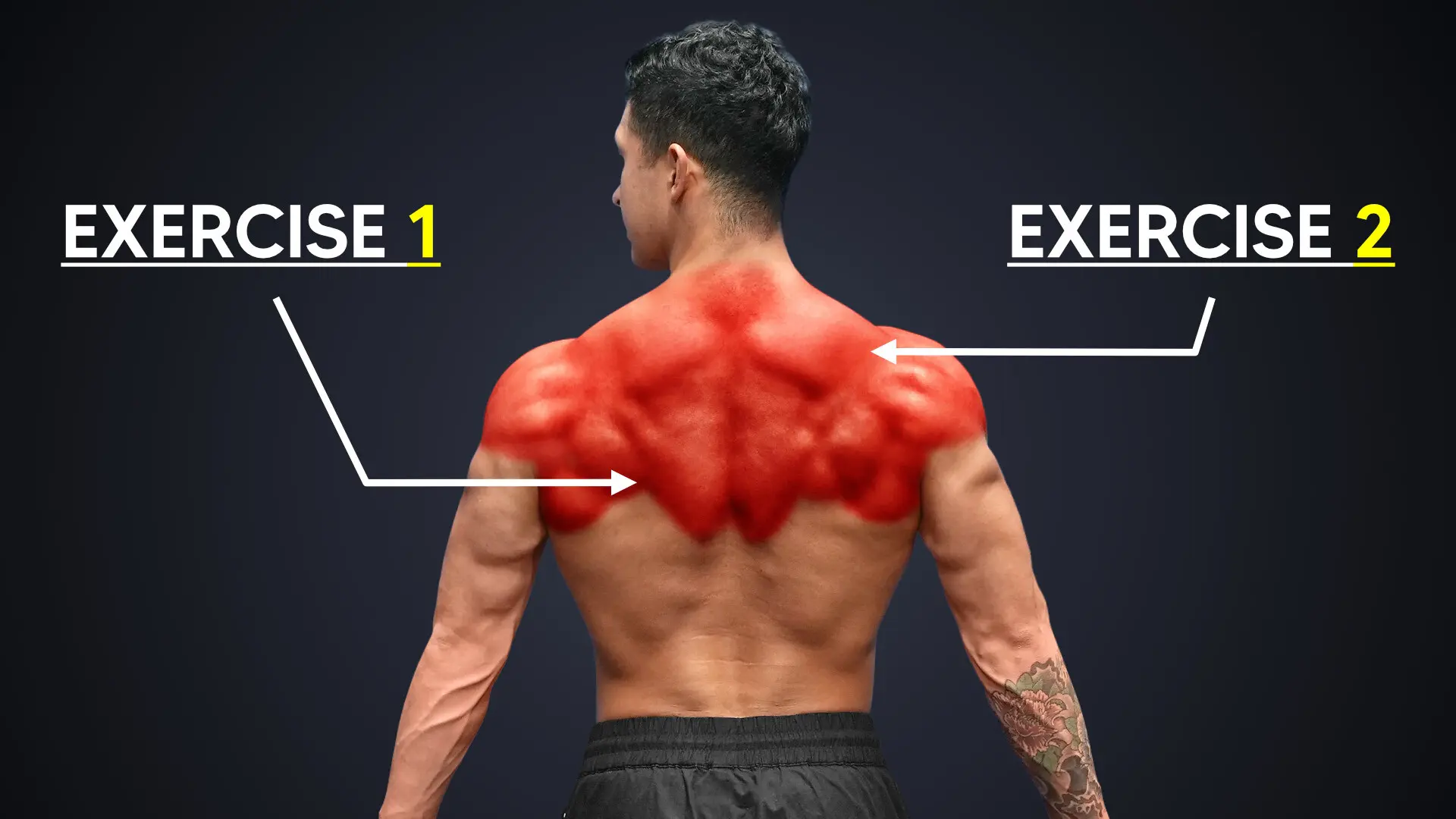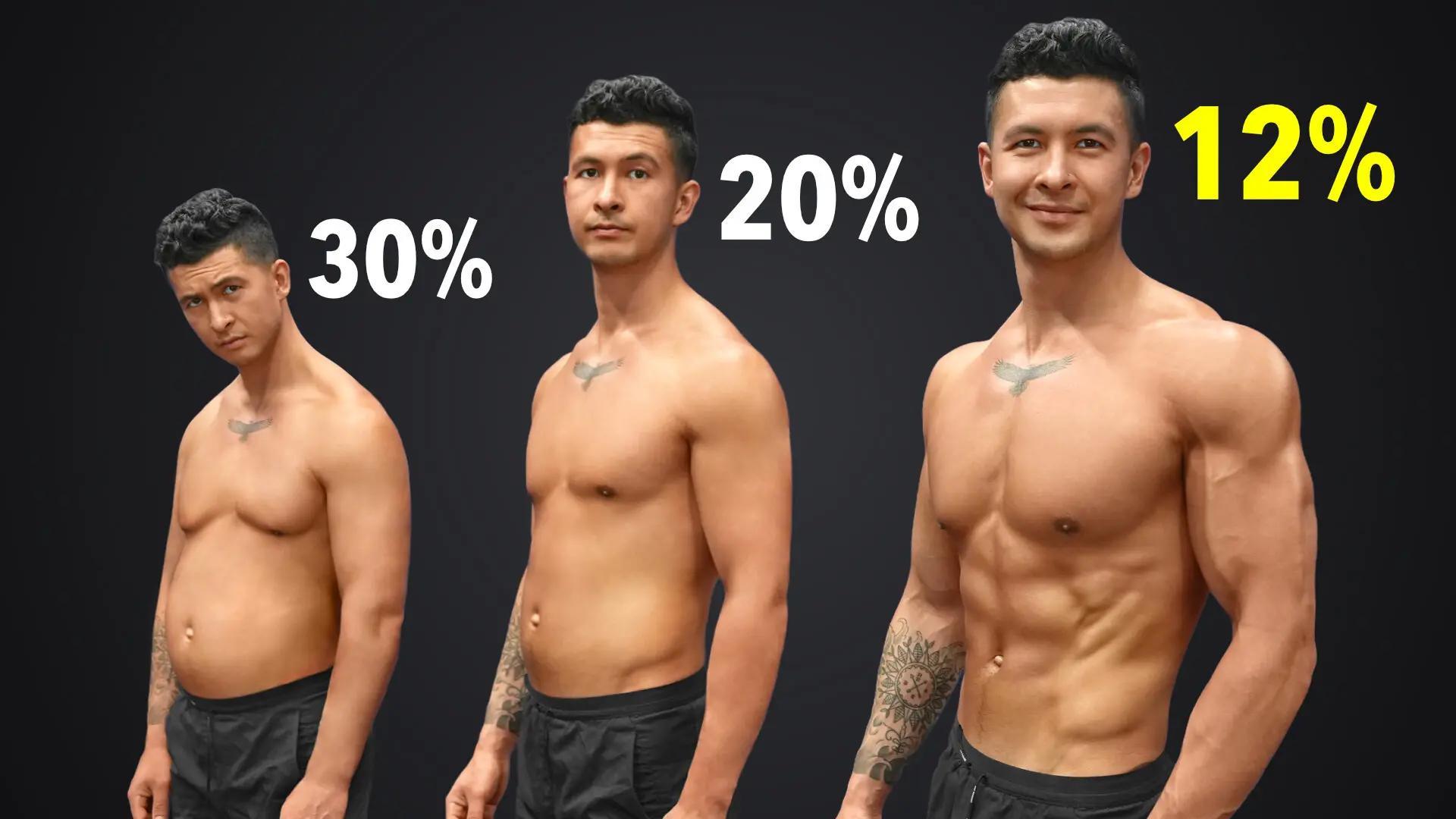
STOP Doing Chest Flyes Like This (5 Mistakes Slowing Your Chest Gains)
You're trying to grow your chest. But no matter how many sets of chest flyes you hit it with, it just doesn't seem to grow. Discover the 5 mistakes you could be making here.
Chest flyes are one of the most effective exercises for building your chest.
But if you don’t do them correctly, the muscles worked will be other muscles, like your shoulders — instead of your chest.
There are 5 common chest flyes form mistakes almost everyone makes. They’re easy to fix but will make a massive difference in your chest growth.
Before that: if you're looking for a training program that'll help you set up every single one of your workouts for optimal muscle growth, I've got just the thing for you. Every BWS program is designed to be an all-in-one, science-based process that’ll get you to your dream physique FAST. And best of all? It's all rooted in science. For more information:
Click the button below to take my analysis quiz to discover the best program for you:
↓
A Note On Chest Flyes Variation
Now, there are generally 3 different types of chest flyes you can do:
- Dumbbell chest flyes
- Cable chest flyes
- Machine chest flyes (e.g., the pec deck)
As you’ll learn later on in this article, some of these options are better than others.
But for now, as we go through the mistakes and fixes I’ll make sure to show you how they apply to each one of these chest flyes variations.
Mistake 1: Elbow Bend
The first mistake has to do with the bend in your elbows at the bottom and top position of a fly. I’ll first use the dumbbell fly to illustrate this.
At the bottom position, the straighter your arm is, the more tension will be applied to your chest. In fact, if we apply simple physics, moving your hand about 50% further out from your elbow would double the tension placed on the chest.
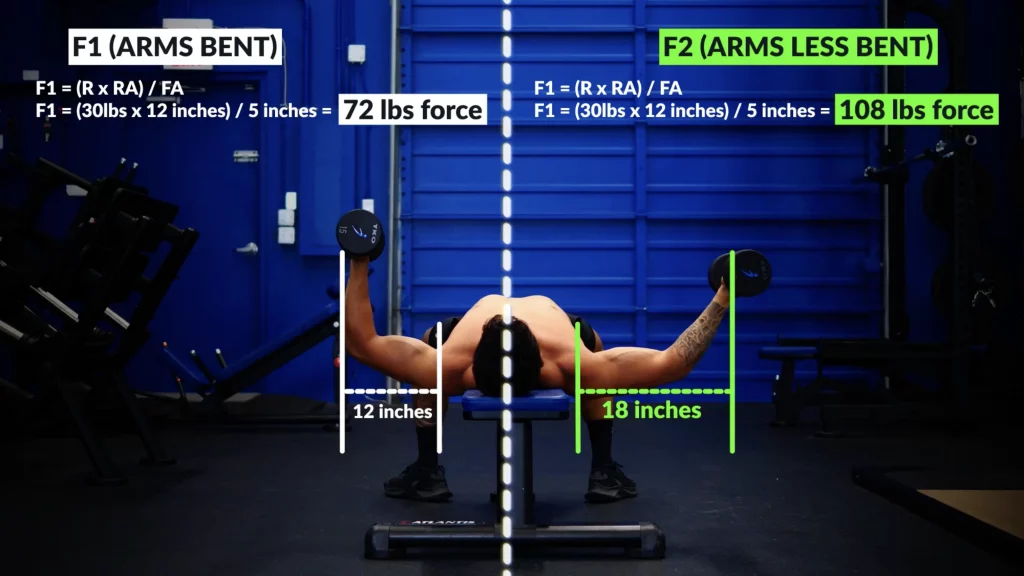
This is what makes the fly such an effective movement, you can highly stimulate your chest with less weight.
However, the straighter your arms go, the more your biceps also get involved.
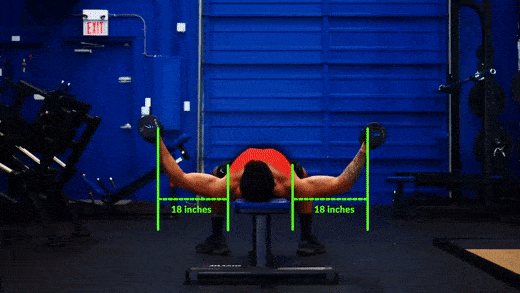
Eventually, there comes a point where your biceps are starting to work harder than your chest is and will become the limiting factor in the movement instead of your chest.
The same is true with the cable chest flyes or machine chest flyes (on the pec deck, for example).
How To Do The Chest Flyes Exercise To Ensure Maximum Chest Activation
So, instead, at the bottom position, you’ll want to keep a slight bend in your elbows such that your hands are just slightly outside your elbows.
However, once you get to the top position, the opposite is now true.
The main function of the chest is horizontal adduction, the act of bringing your upper arm together.
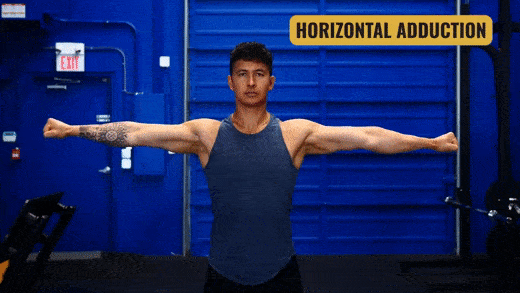
So if you kept your arms bent, your upper arms wouldn’t be brought together as far as they could be, and you’ll be engaging less of the chest muscles and encouraging more of your shoulder muscles to take over.
Instead, straighten your arms and think about squeezing your elbows together as you approach the end position.

Here’s how the proper form would look on all three chest flyes variations. Simply focus on bent arms at the start and straight arms at the end.
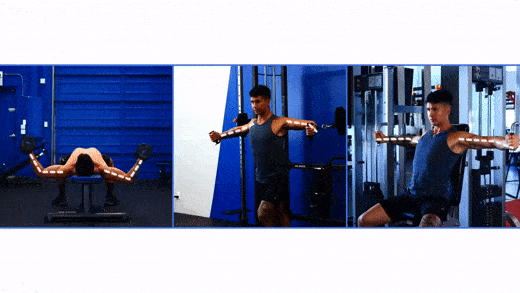
By the way: this is the exact same tip you should incorporate when bench pressing, too.
Mistake 2: Line Of Force
The next mistake you're making on the chest flyes has to do with something called the line of force.
Let’s first explain this with the example of standing cable chest flyes. During this exercise, the direction of the cable will determine where on your body the force is being placed. For example, here, the cable angle is set a little higher than the height of my head.
Now at the end position, notice the direction of the cable compared to my arms. They aren’t aligned, and as a result, the cable is pulling my arm up, and my arm has to fight to pull the cable down as I perform the fly.
This takes some tension away from the chest and puts it onto other muscles like the lats.
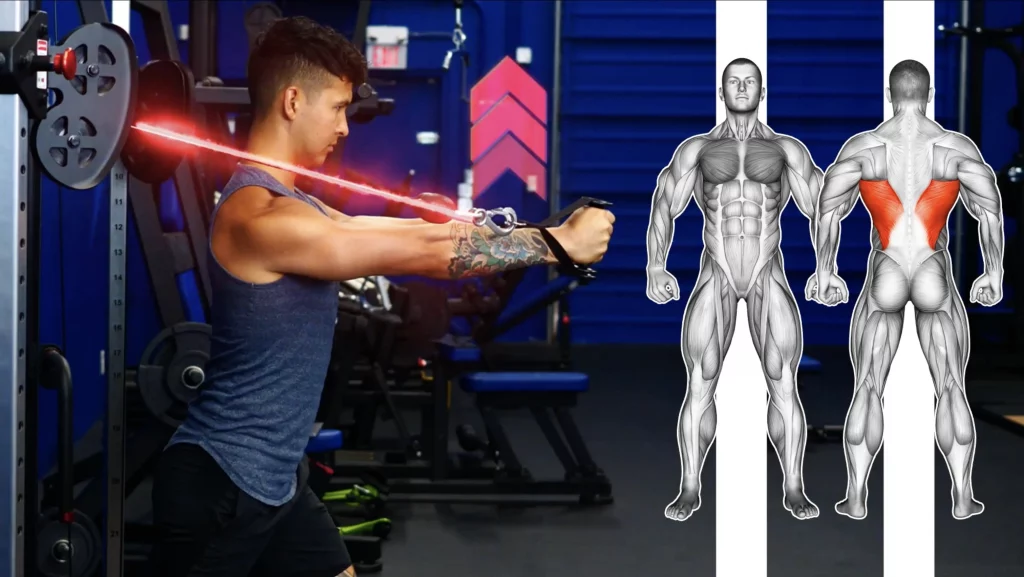
On the other hand, here, the cable height is set lower.
At the end position, the cable is now pulling my arm down. In this case, my arm has to fight to pull the cable up as I perform the fly and takes some of the tension away from the chest, and puts it onto the front delts.

Line The Direction Of The Cable With The Direction Of Your Arms
So instead, to maximize chest activation on the chest flyes, the direction of the cable needs to be aligned with the direction of your arms.

You can play around with the cable height and your arm position until you get this right. Later in this article, I’ll show you how a higher or lower cable setup would work and when you’d use that, but try this out when performing your cable chest flyes, and you’ll feel the difference right away.
And the same applies to the chest flyes done with a resistance band, on the pec deck, or even the dumbbell chest flyes.
In this case, however, since you can’t adjust the line of force like you can with cables, you’ll simply want to keep your elbows up such that your hands and shoulders are always at the same height rather than letting your elbows drop down.
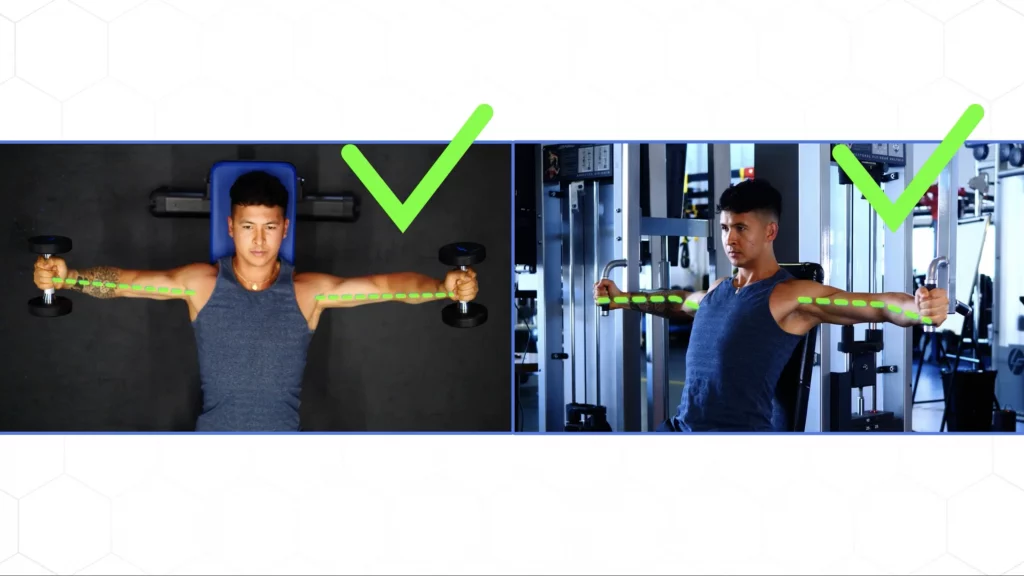
At this point, you're probably wondering, "Well, what about all the other exercises I'm performing in the gym? Am I doing them in a way that's best for growth?" Honestly? If you're like most people, your form will still need a little bit of tweaking. But there's good news: all BWS programs guide you through the proper form to use on all exercises, so you only grow your muscles as intended. Sounds good? If so, then:
Click the button below to take my analysis quiz to discover the best program for you:
↓
Mistake 3: Shoulders Taking Over
The next mistake is probably the most common mistake I see on the chest flyes.
Given that many of us are stuck in a hunched-over posture, your shoulders will have a natural tendency to want to take over during your chest exercises.

This can lead to the front of your shoulders experiencing most of the growth rather than the chest.
Here, I’m letting the shoulders take over, and you can see how my shoulders round forward every time I reach the end of the movement.
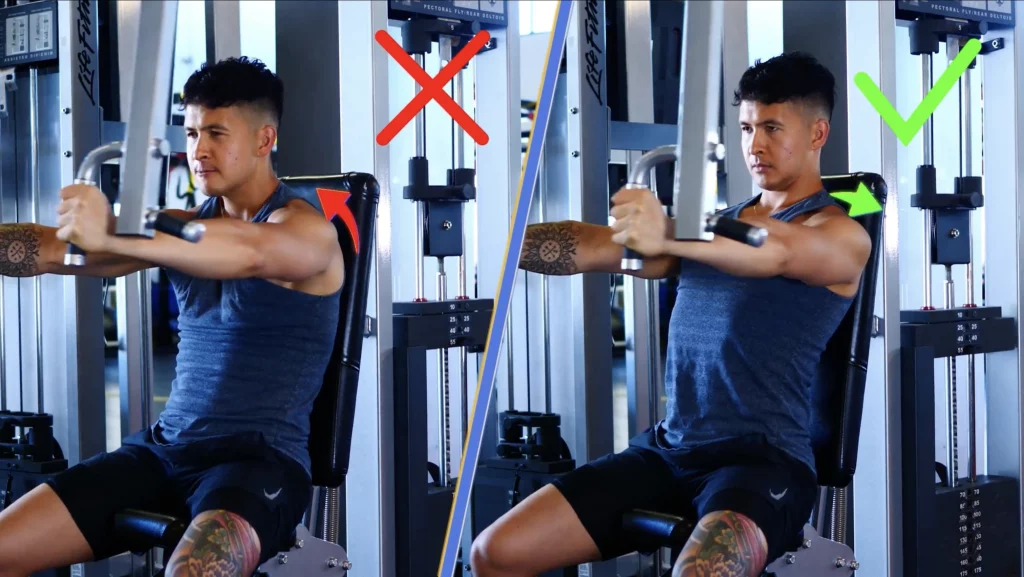

Instead, to ensure the tension is being placed on the chest, first bring your shoulders down and away from your ears and then stick your chest up and out. From here, simply focus on squeezing your biceps into the sides of your chest.
Your chest should remain up and out throughout this rather than letting your shoulders come forward and take over.

You may have to lighten the weight on the chest flyes — but trust me, make this one fix alone on whatever fly variation you’re doing, and it will make a world of difference in your chest development.
Beyond making those tweaks on your chest flyes, ideally, you should also work on your posture. Here are a few past articles of mine that may help with that:
- The Easiest Way To Fix Hunched Posture (3 Daily Moves)
- How To Straighten Your Back (5 Best Posture Exercises!)
- How To Get Taller In Just 5 Minutes (The Perfect Posture Routine)
Mistake 4: Not Targeting Different Portions Of Chest
The next mistake has to do with how you’re setting up your chest flyes.
During a regular dumbbell, cable, or pec deck fly, the main area targeted is the mid-chest.
But if you’re already doing a lot of flat bench presses and flat dumbbell presses, which already target the mid-chest, I’d recommend adjusting the setup of your chest flyes to work more of your upper and lower chest to help round out and provide a more balanced look to your chest.
Unfortunately, the pec deck can’t be adjusted much because of the fixed bench.
But for a cable fly, you’d want to bring the pulleys up higher and perform a high to low fly to target the lower chest.
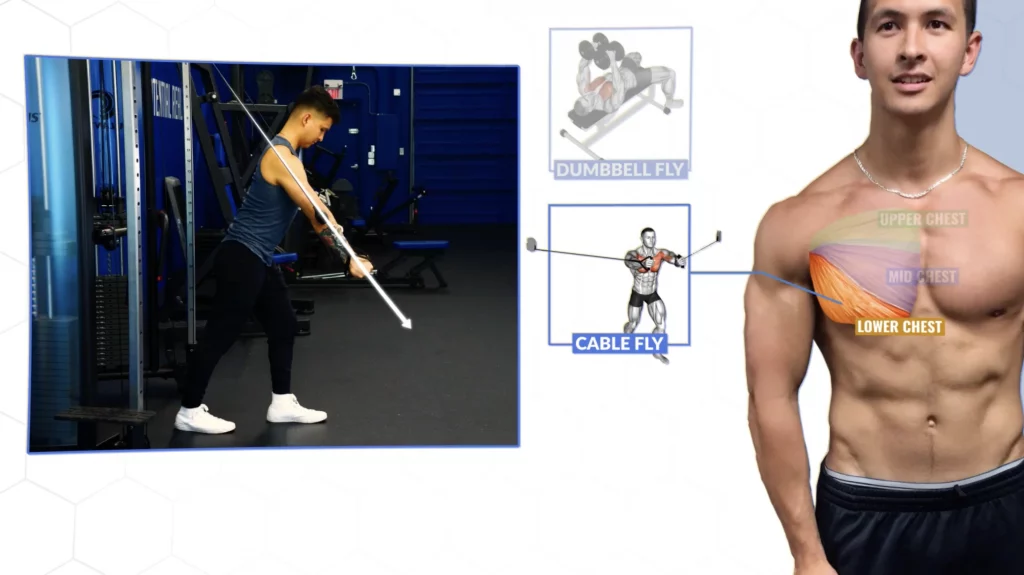
Just make sure that your forearms still move and stay in line with the direction of the cables like we talked about earlier.
To target the upper chest, you’d want to use a bench set up at a slight incline like so.

The same can be done with dumbbells by using a slight incline to emphasize the upper chest and a slight decline by putting a plate under one end of the bench to emphasize the lower chest.

Mistake 5: Relying Only On Dumbbells
The last mistake has to do with the type of chest fly you choose to do.
A common choice is the dumbbell fly. Although with the fixes we went through, your dumbbell chest flyes will be made far more effective, they still have their limitations.
Their main limitation is they’re only really hard and challenge your chest at the bottom position. As you get towards the top, the tension placed on the chest reduces and becomes non-existent as soon as your hands come in between your shoulders.
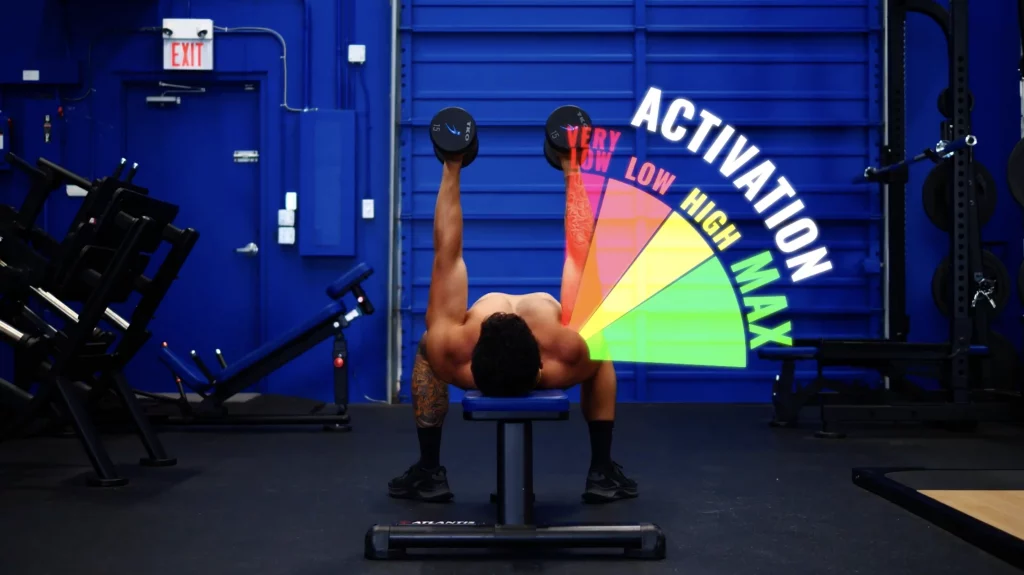
This is why studies that have compared the dumbbell fly to other chest exercises like the bench press have found that the former just doesn’t seem to activate the chest very well.
Now, this isn’t necessarily a bad thing.
In fact, exercises that challenge your muscles most when they are fully stretched, like at the bottom of a dumbbell fly, seem to be the most effective exercises for muscle growth.
So they’re definitely still a good option, especially if you only have access to dumbbells.
Avoid Doing The Dumbbell Chest Flyes If You're Already Doing Other Chest Presses With The Same Resistance Profile
However, most of you are likely already doing a dumbbell, bench, or machine chest press before you get to your chest flyes.
These exercises already challenge your chest the most in the fully stretched position.
So, doing a dumbbell fly afterward can be redundant, like doing the same exercise again but with lighter weight.
Instead, to potentially maximize growth, your workout should challenge your chest throughout the whole range of motion, especially in that end position when your arms are brought in together.
How can you do this?
Simple, with a properly executed cable fly or machine pec deck, with cables having a slight advantage because you can easily adjust them to target the different areas of the chest as we previously went through.
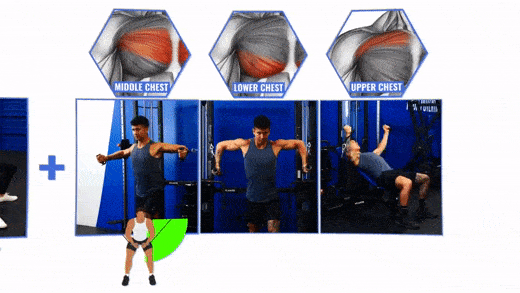
Takeaway
Make these 5 changes to your chest flyes, and you’ll instantly feel and see the difference, even if you’re using lighter weight than you usually do.
But guys, it’s important that you take this same detailed, science-based approach to all of your exercises. By doing so, you’ll maximize every single rep you do and will get results faster, and easier.
For a step-by-step plan that puts this all together for you and has helped thousands of others just like you lose fat and build lean muscle, just take our analysis quiz below to discover which of my programs are best for you and your specific body:
Click the button below to take my analysis quiz to discover the best program for you:
↓
I’d also highly recommend checking this article out to fix your dumbbell press or this for some tips on how to speed up your chest gains.



